Japanese sushi has become popular all over the world, but do you know Makizushi? This is a type of sushi rolled in many styles from the simple Kappa Maki (cucumber roll) version to the more fancy Kaisen Maki (seafood rolls). Then there’s also Uramaki (inside-out rolls) style and Tamago Makizushi wrapped in a thin omelette version. With a Makizushi roll to match all tastes, you can eat it in everyday meals as well as on special occasions.
Whether you love sushi or are just getting to know about it, this guide will give you everything you need to start making your own Makizushi!

What is Makizushi?
Makizushi or rolled sushi is a traditional Japanese dish made by rolling vinegared sushi rice and some fresh or cooked fillings wrapped in a nori seaweed sheet using a bamboo mat. The roll is then sliced into bite-sized pieces and served with soy sauce, wasabi Japanese horseradish, and pickled sushi ginger.
Makizushi has a variety of styles, but it typically comes in two versions; Hosomaki (thin rolls) with usually one filling such as cucumber, fresh tuna or picked plum and Futomaki (thick rolls) with two or more fillings. Futomaki can be made and eaten at any time of the year as well as for Ehomaki on a special occasion like Setsubun.
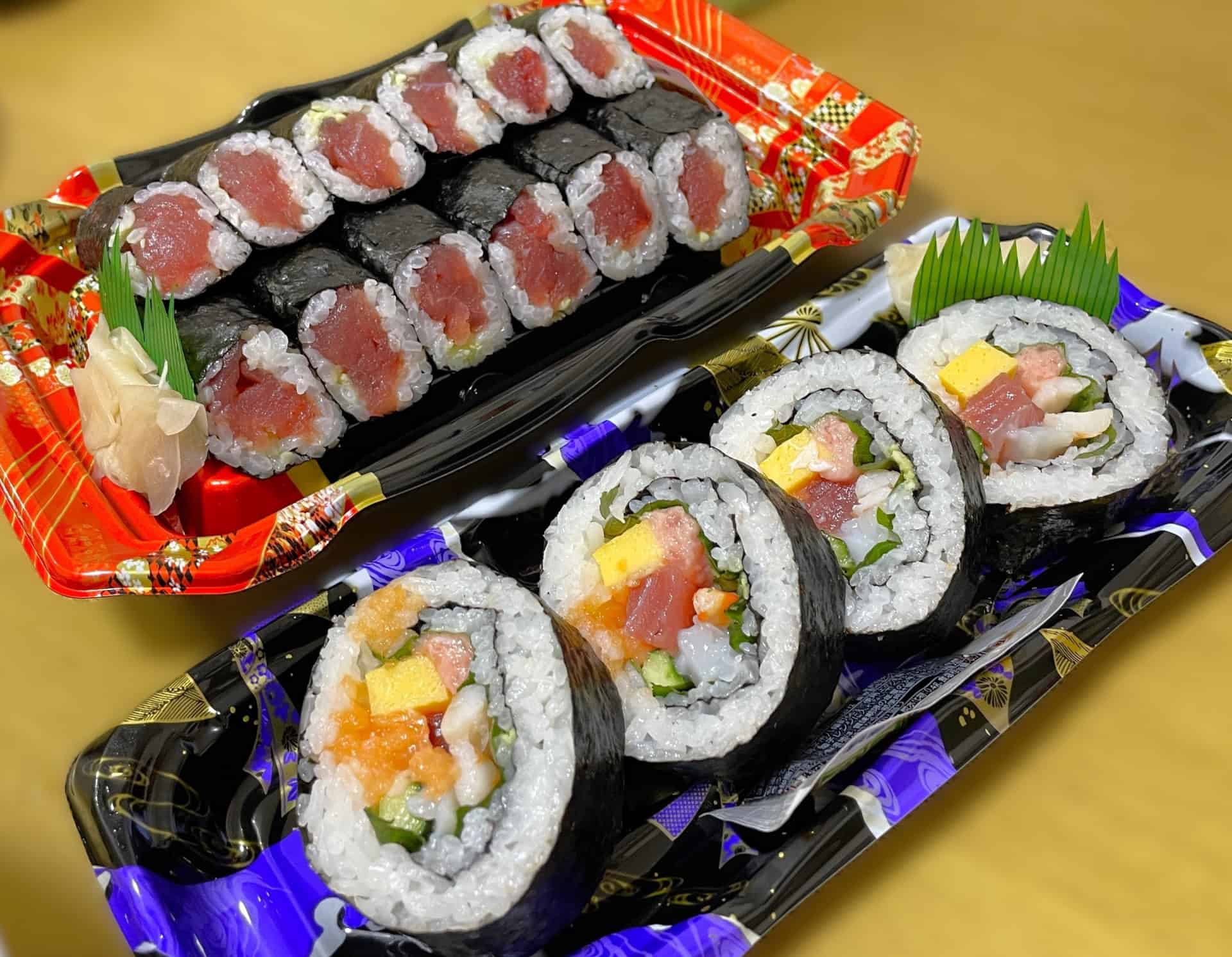
How to Make Makizushi with a Makisu (sushi rolling mat)
Making makizushi at home is easy and you can customise this Japanese dish to your taste. To sum it up, prepare your sushi rice and ingredients first and then set up your workstation and make sure you have all the tools and ingredients you need nearby before you start rolling. Then you can layer the ingredients on the nori sheet and use your bamboo sushi mat to roll and shape the makizushi.
Makizushi Tools
- Bowl and Container
- Damp cloth/kitchen towel
- Rice paddle or Spatula
- Sushi rolling mat (makisu) or Sushi making kit for non-rolling
- Sharp knife
- Cling film/ Plastic wrap (optional)
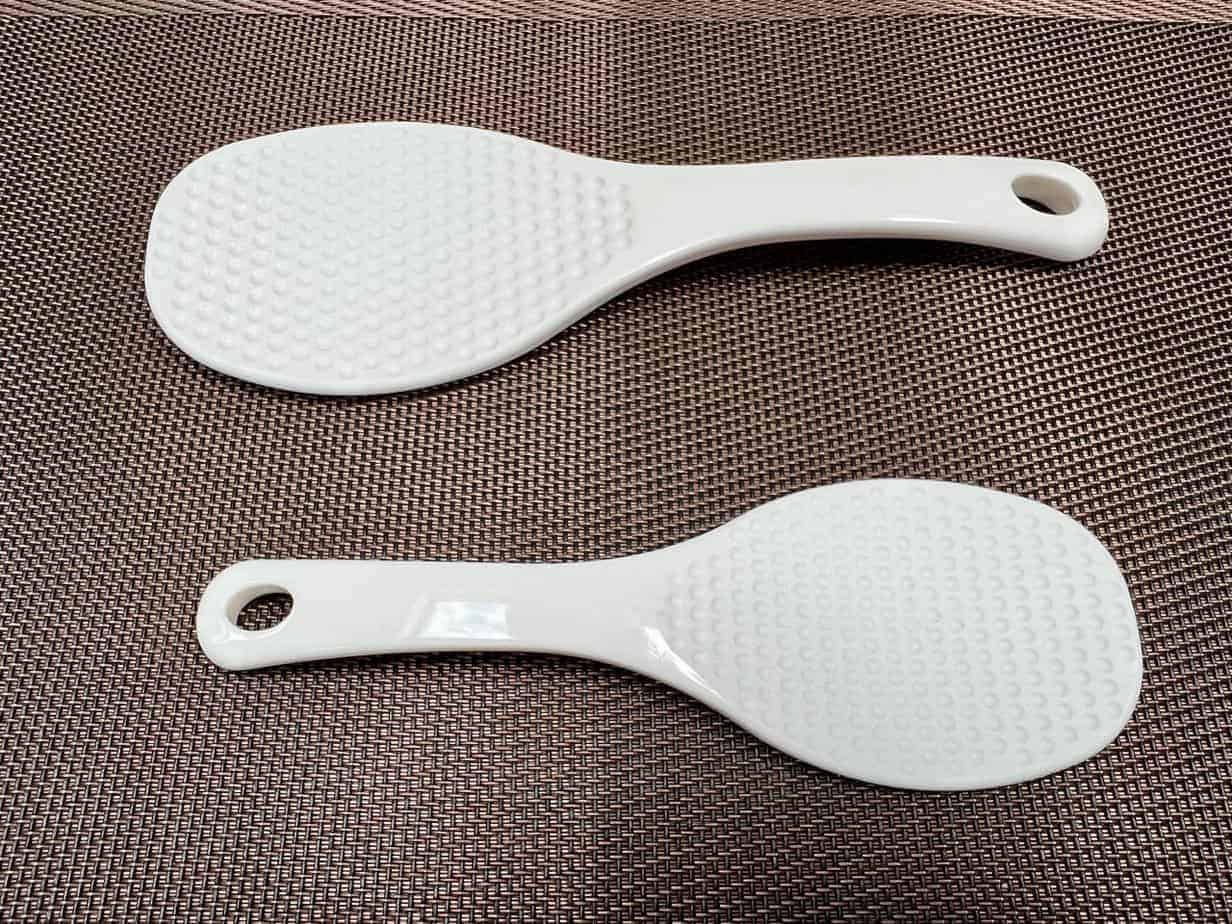
Makizushi Ingredients
- Cooked and seasoned rice with rice vinegar, sugar and salt (*For 150g uncooked rice/345g cooked rice, you’ll need 2 tbsp unseasoned rice vinegar, 1 and 1/2 tbsp sugar, and 1/2 tsp salt or you can buy a bottle of ready-made sushi vinegar such as Mizkan Sushi Seasoning at a Japanese supermarket or Amazon.)
- Nori seaweed sheets
- Fillings of your choice (e.g., cucumber, imitation crab sticks, cream cheese, tamagoyaki (Japanese rolled omelet), sashimi-grade raw fish, smoked salmon or tinned tuna. The choices are endless!
- Soy sauce and pickled ginger for serving and wasabi (Japanese horseradish) either to spread a little onto the rice when making a makizushi or when serving.

Makizushi Step-by-Step Instructions
1. Prepare Your Sushi Rice
- Have cooked rice ready. Rinse short-grain Japanese rice until the water is clear. Then cook it according to the package instruction or in a rice cooker. If you’re not using a rice cooker, you can check the ‘How to wash and cook Japanese rice‘ section of our Japanese rice article.
- Warm a mixture of unseasoned rice vinegar, sugar and salt for about 30 seconds in a microwave and stir it. Leave it to cool a little. While the rice is still hot, pour the mixture over the rice using a rice paddle or spatula to control the flow and fold it in gently while fanning it to cool. Instead of making the mixture yourself, you can use ready-made sushi vinegar.
- Once the seasoned rice cooled down to body temperature (37 degrees Celsius / 98.6 degrees Fahrenheit), cover the container with a damp cloth/kitchen towel or plastic wrap to keep the moisture of the rice while you get the other items ready for your makizushi rolls.
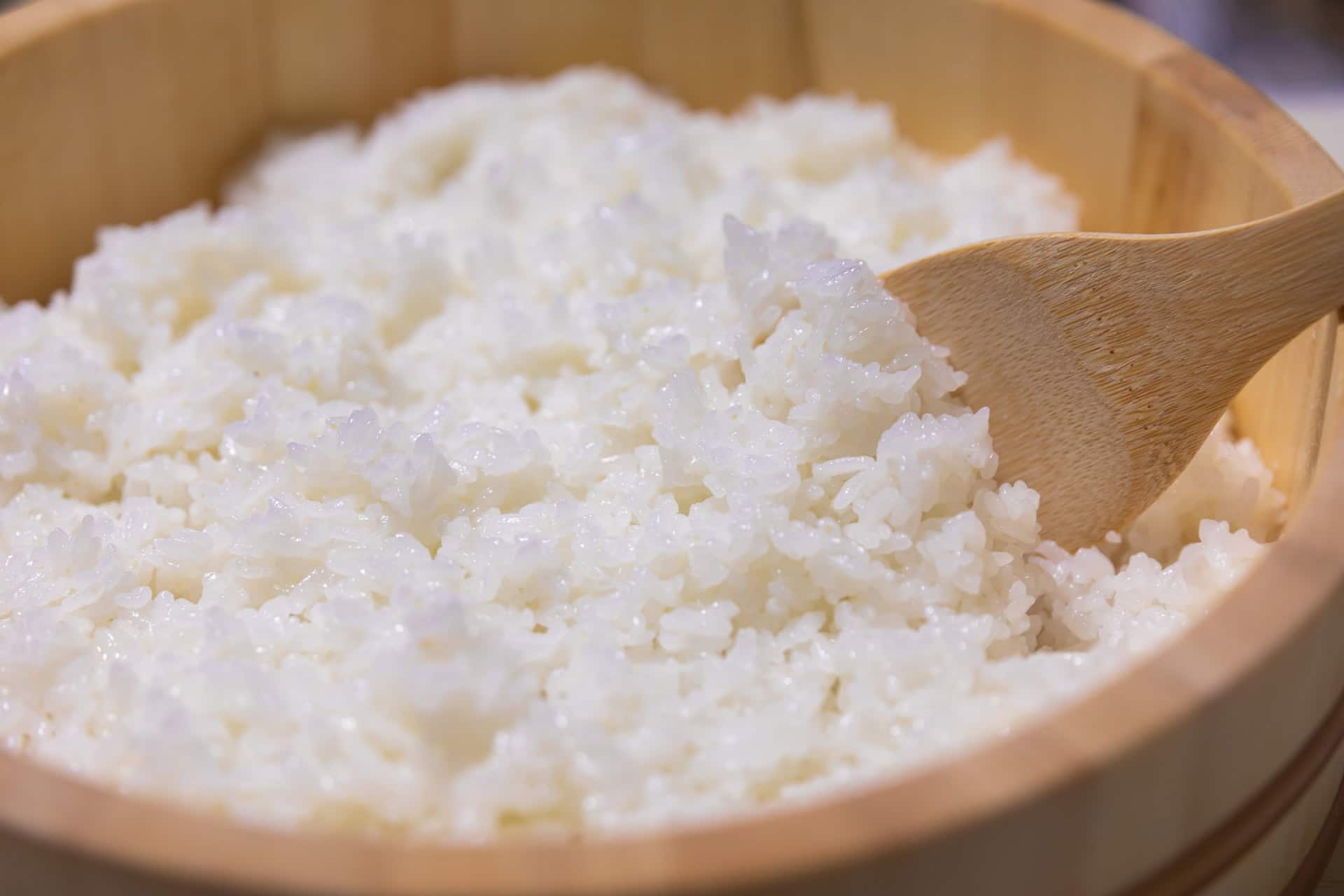
Tip 1: While making the vinegared sushi rice, do not press, stir, mix or mash the rice to avoid the rice becoming mushy.
Tip 2: To give out the sushi vinegar onto the rice evenly and separate rice chunks, use a rice paddle or spatula by holding it at half of a right angle.
Tip 3: Use a uchiwa (Japanese handheld fan) or an electric fan to cool the rice quicker for a better rice texture.
2. Prepare Your Filling Ingredients
- Choose whatever you want to use for your fillings and if any of them need to be cooked, this should be done before you start making makizushi.
- Most of the fillings should be cut into thin strips making it all about the same size.
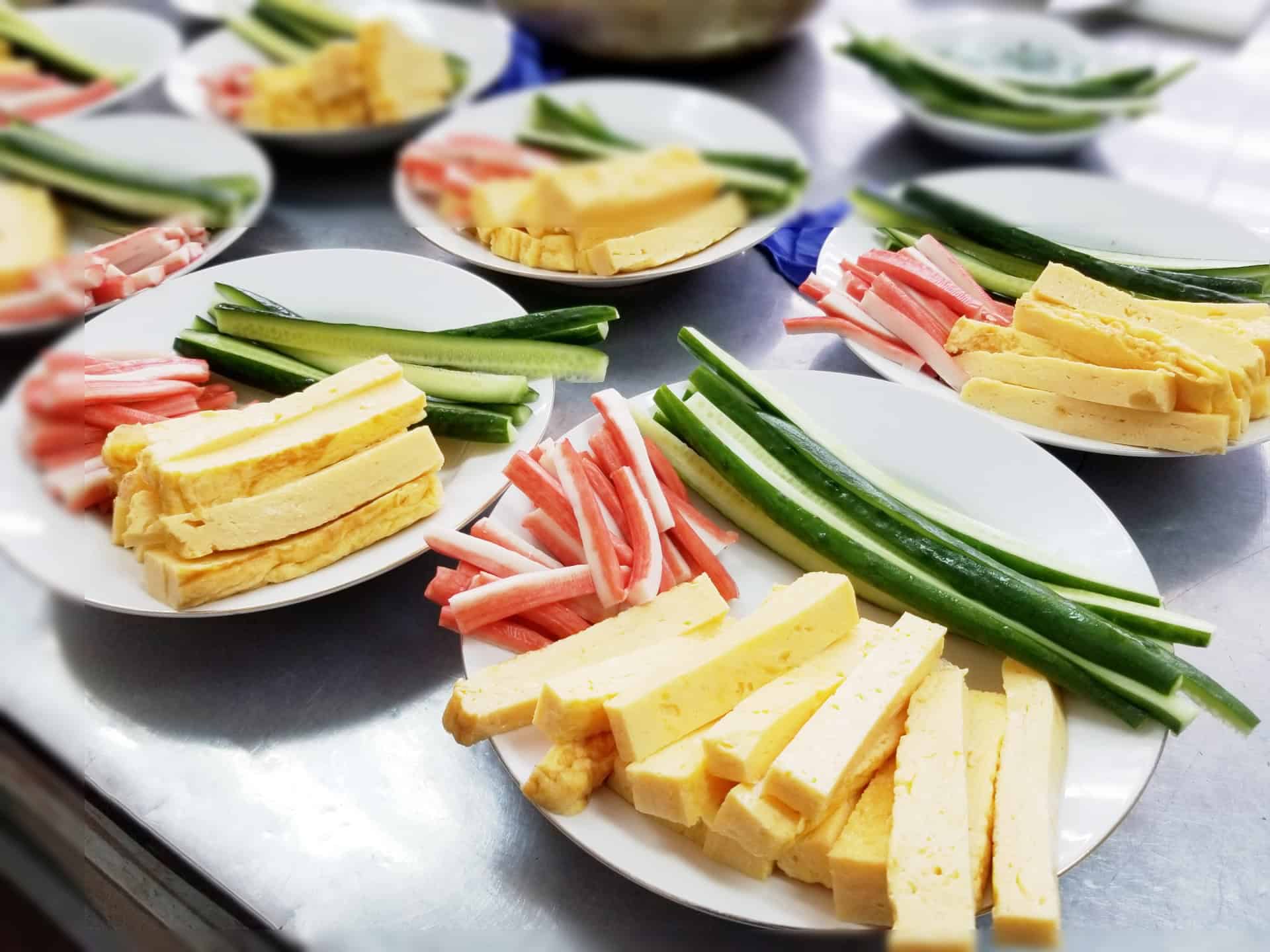
3. Set Up the Makisu Sushi Rolling Mat
Place a bamboo sushi mat on a kitchen work top or a flat surface where you want to make a sushi roll. If preferred, cover the makisu sushi rolling mat with cling film (plastic wrap) for an easier cleanup.
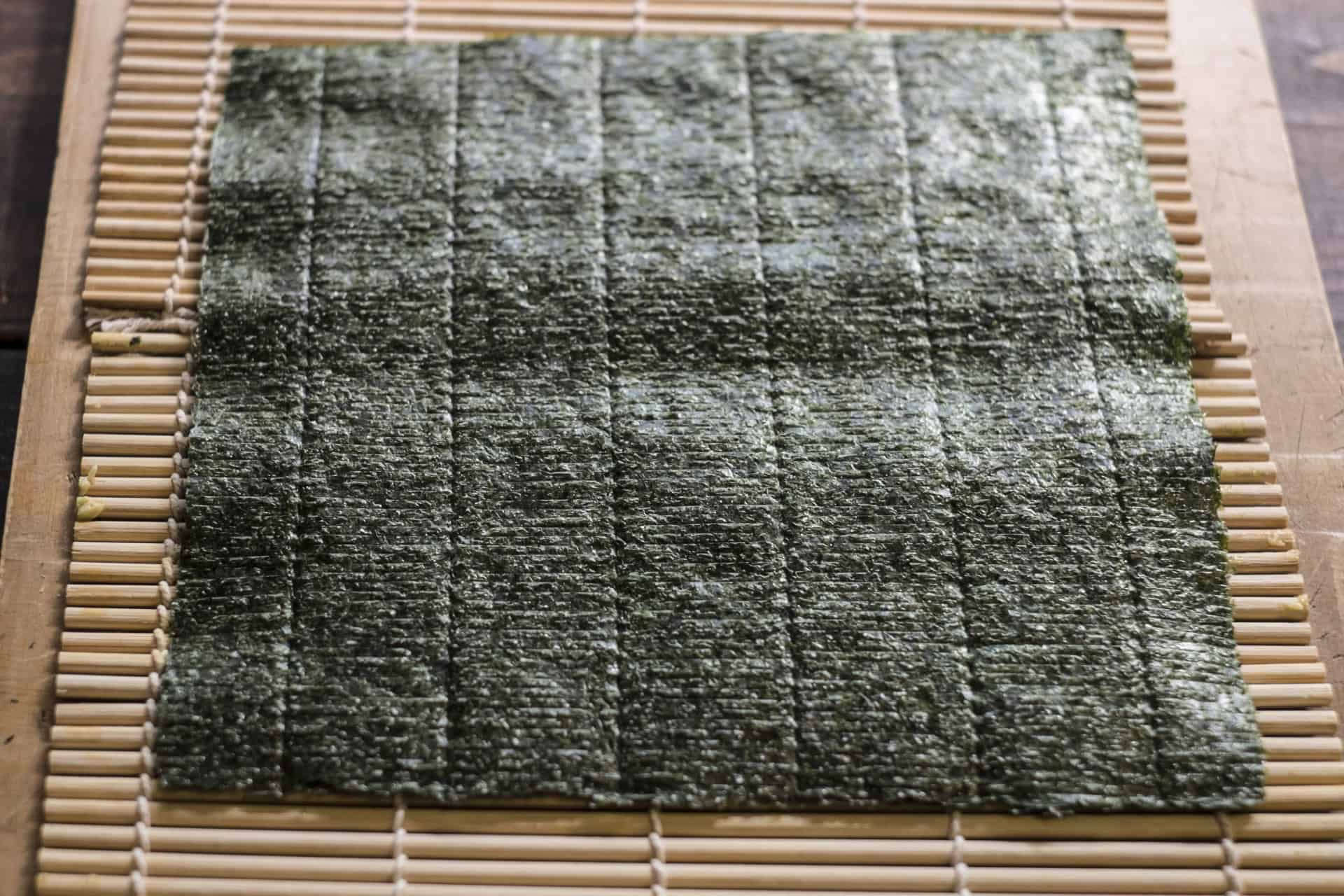
4. Lay Down the Nori & Spread the Rice
Take a sheet of nori seaweed and place it on the sushi mat with the shiny side down. Have a bowl of water with a little rice vinegar in it ready, so you can wet your hands before touching the rice to keep it from sticking to your hands. Then, spread a thin layer of sushi rice evenly on the nori sheet leaving a small space about 2.5 cm (1 inch) at the top edge. Wipe your hands with a damp cloth/kitchen towel when necessary or after each time you touch the rice or ingredients.

5. Add Fillings
Take your fillings and arrange them in a line along the middle of the rice horizontally not vertically by placing them side by side or on top of each other, but not to make it overcrowded.

6. Roll the Sushi
Using the bamboo mat, lift the edge of the nori with rice nearest to you and gently roll it over the fillings. Tuck and press as you roll. After you’ve finished rolling it to the end, if needed, moisten the bare edge of the nori with a little bit of water and seal the roll. Lastly, take out the mat and roll it a little more using your hands to make it into a nice cylinder shape.
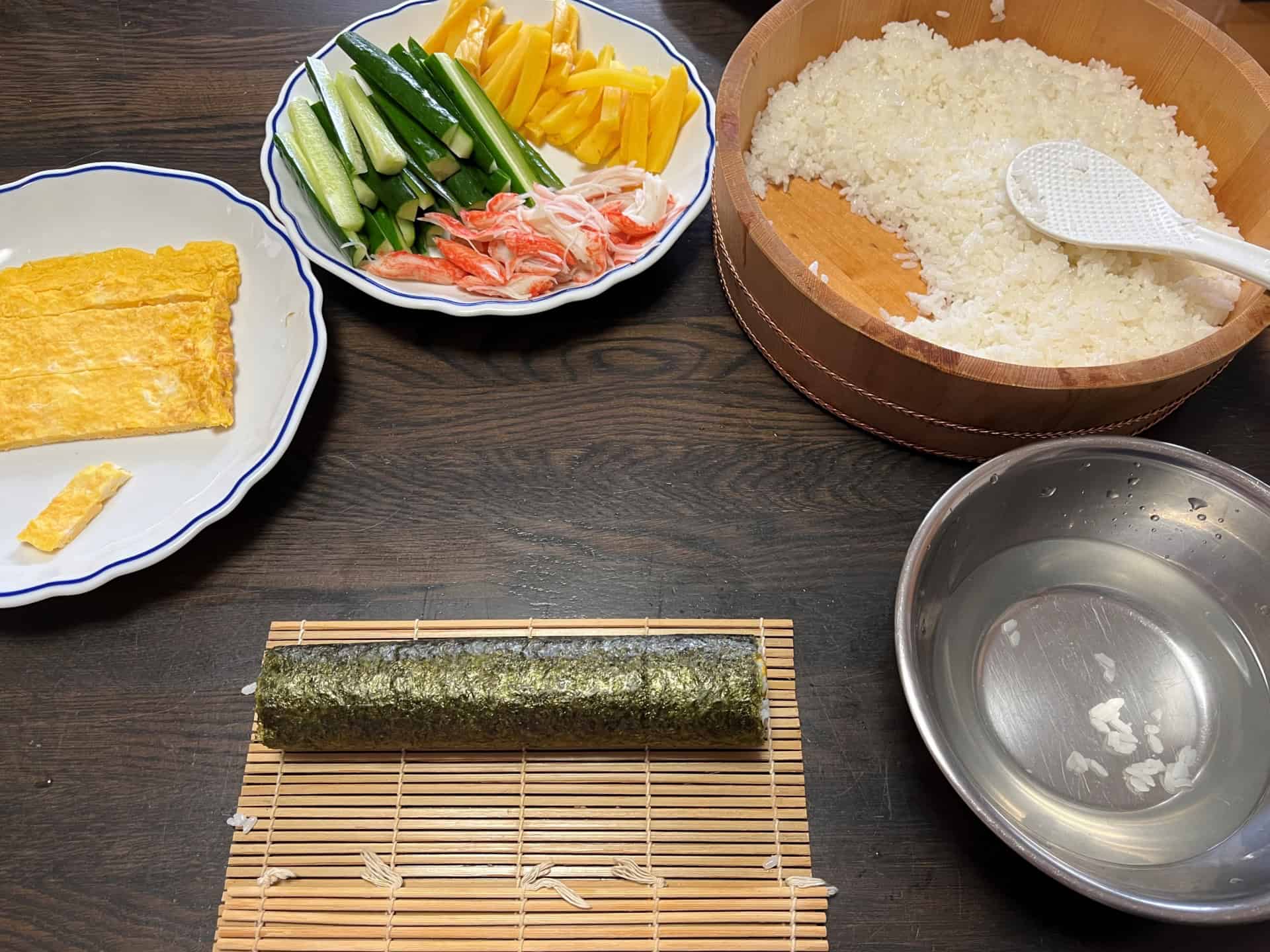
For a rolling technique, check video clips of How to make “Hosomaki (thin rolls) – Cucumber Roll” and “Futomaki (thick) sushi rolls” by a professional chef: Nishikawa 11 shoku.
7. Cut the Roll & Serve and Enjoy
Using a sharp knife, slice the roll into even pieces. Make sure to wet or wipe the knife with a damp cloth (kitchen towel) before slicing each time. *If you’re making makizushi for Ehomaki, skip this part as you shouldn’t cut the rolls. Arrange the sushi pieces on a plate and serve with soy sauce, wasabi, and pickled ginger.
Tip 1: If you haven’t tried making sushi rolls before, it might be good to start with a little less rice and fewer fillings until you feel comfortable with rolling.
Tip 2: If you don’t have a makisu sushi rolling mat, you can use cling film or baking sheet instead. Or consider getting a Sushi making kit which we’ll explain in the next section as you don’t need to deal with rolling at all.
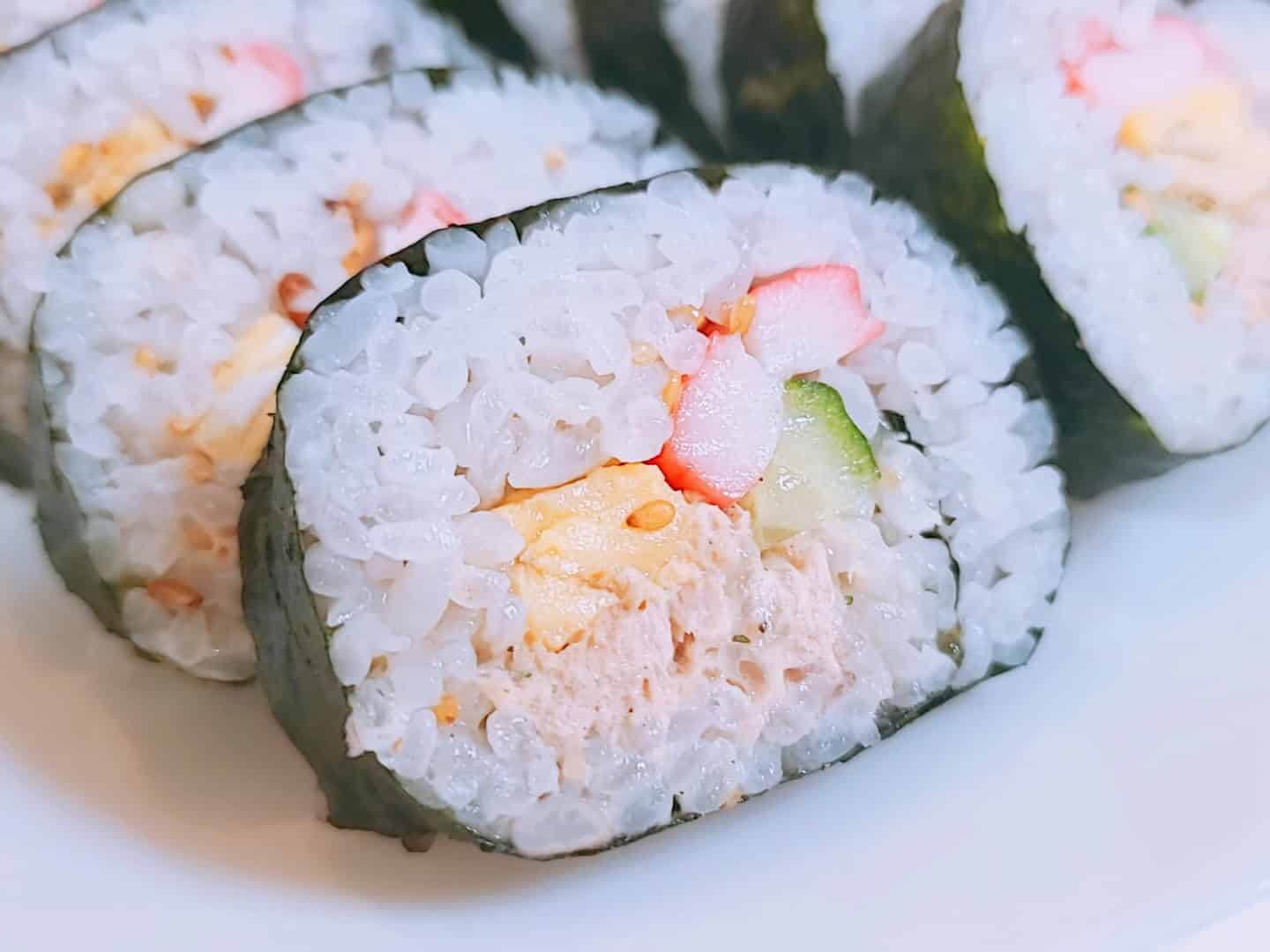
Sushi Making Kits
Sushi making kits are great to use when making not only sushi rolls but also other types of sushi as you don’t have to worry about rolling or shaping at all. Some of them even come with onigiri rice ball molds and hand-roll sheets as well as other necessary things you will need to make sushi and sushi rolls.
Aya Sushi Maker 3 – Sushi Making Kit – Premium 25 Piece Sushi Set comes with AI assistant, recipes and even video tutorials to help you make your sushi making easy and fun.
TantivyBo Sushi Making Kit 22 Pcs, Sushi Rolling Mat Kit includes Onigiri rice ball moulds, a Temaki hand-roll Roller as well as a Rice paddle/rice spoon. These can all come quite handy if you want to make rice balls and hand-rolls.
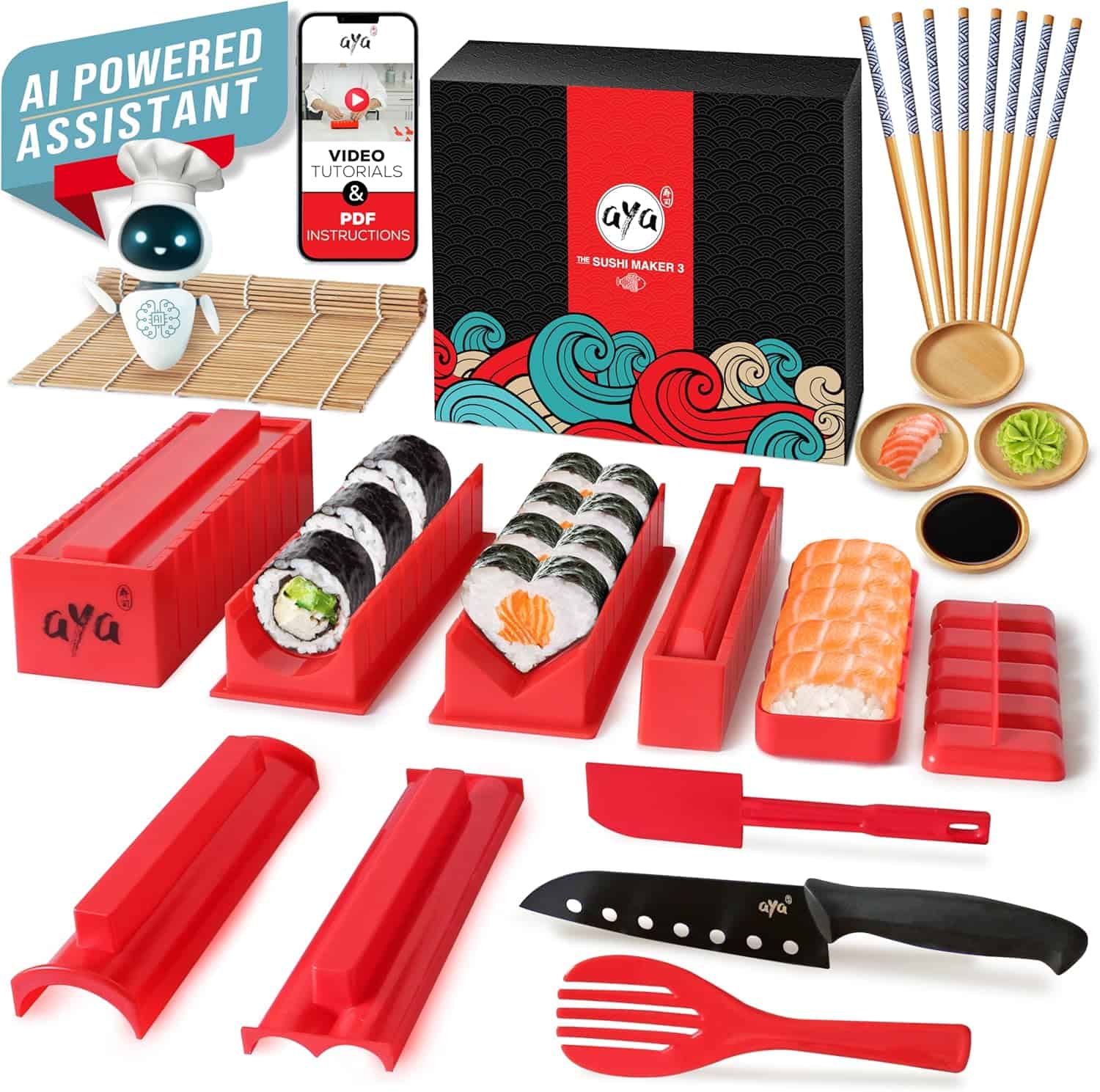
Easiest Style of Makizushi
When it comes to a maki rolling method, and if you find it rather difficult after a few tries, you can always opt for making Temaki zushi (Hand rolls) as this is the easiest sushi roll to make. There is no rolling or slicing required.
You’ll need to cut a nori sheet in half or a quarter first, though. Then, place the nori sheet on your palm or plate and put sushi rice on the left side of the nori sheet or in the middle of it, but a little diagonally and add some fillings of your choice. After that, just wrap the sushi rice and fillings with the nori sheet to form a cone shape and eat it while holding it.
Hand roll sushi parties are popular in Japan as people can have fun and fantastic time with friends and family especially you don’t need to make hand rolls for your guests in advance as everyone will be making one for themselves.
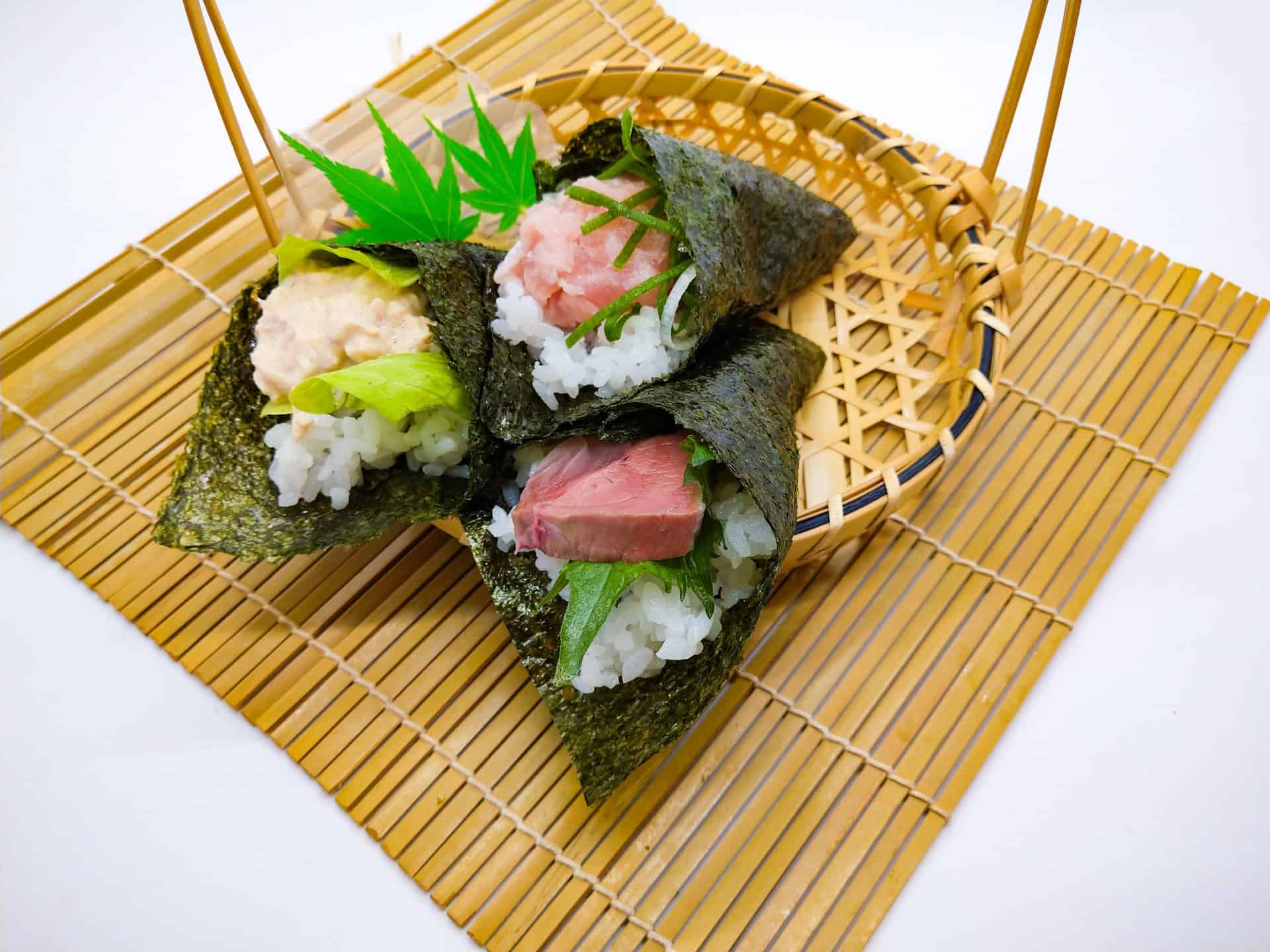
Where to Buy Makizushi Ingredients in the UK
In the UK, you should be able to get most of the things you need to make makizushi such as nori seaweed sheets, sushi vinegar like Mizkan Sushi Seasoning and other items on Amazon or from some Japanese supermarkets which are listed in our post of the Best Japanese Supermarkets Online.
If you’re thinking of buying fresh fish and seafood and wondering where to get them in London, check our article of Where to buy the freshest fish in London as those places in the article are great to get the sashimi-grade fish and seafood.
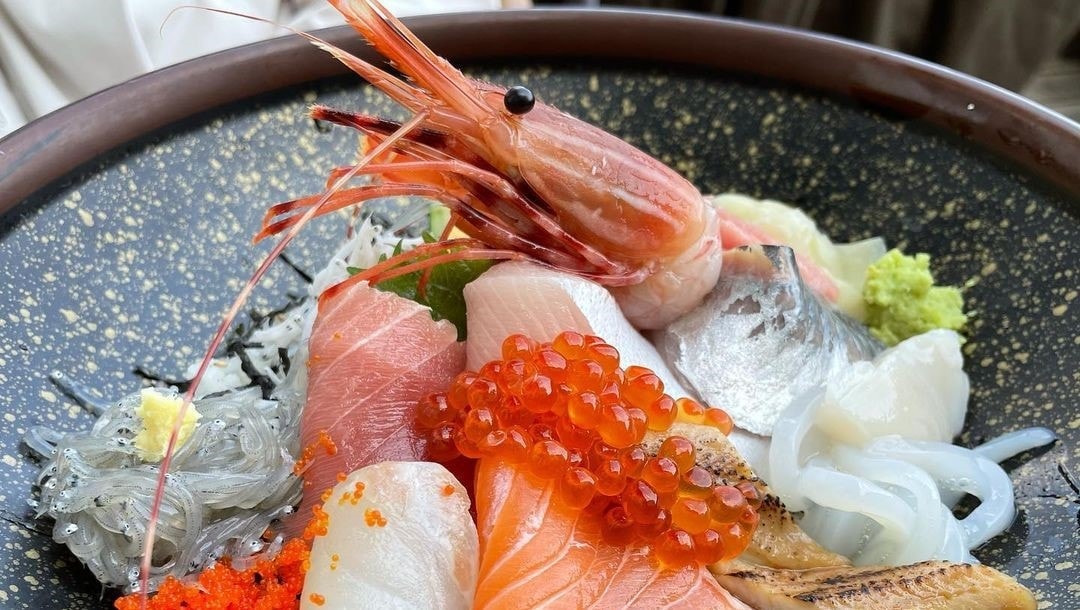
We hope you have a great time creating your own makizushi in your home. Keep in mind that practice helps you improve your rolling technique, and don’t hesitate to try different fillings and flavours which can make your sushi rolls even better. Whether you choose traditional fillings or new ideas, enjoy making your own homemade makizushi. Get ready to wow your friends and family or just treat yourself to a yummy sushi meal!
Frequently Asked Questions
What Are the Key Differences Between Makizushi and Nigiri?
Makizushi and Nigiri are both Japanese sushi types. Makizushi is a sushi roll that has rice and fillings wrapped in a nori seaweed sheet while Nigiri is a small piece of rice topped with a thin slice of raw fish or other ingredients.

Can Makizushi Be Made Without a Bamboo Mat?
Yes, you can make sushi rolls without a bamboo mat although many people use it as it’s the traditional way of making makizushi. If you don’t have a sushi mat or if you’re worried about getting it messy, you can use a piece of parchment paper, baking sheet or plastic wrap. Or consider making Temaki zushi hand rolls instead. Another option will be getting a Sushi making kit for a fun and easy sushi making.

What Fillings Should I use for Makizushi?
For hosomaki (thin rolls) fillings, cucumber is famous for its crisp freshness as well as other traditional fillings such as sushi-grade tuna, pickled takuan (daikon radish) and pickled plum paste. For Futomaki (thick rolls), you can pick and mix a few ingredients you like such as cucumber, avocado and imitation crab meat. The charm of makizushi lies its wide range of styles and versatile versions, so you can choose any filling or fillings you like to create your own sushi rolls based on your personal preference.
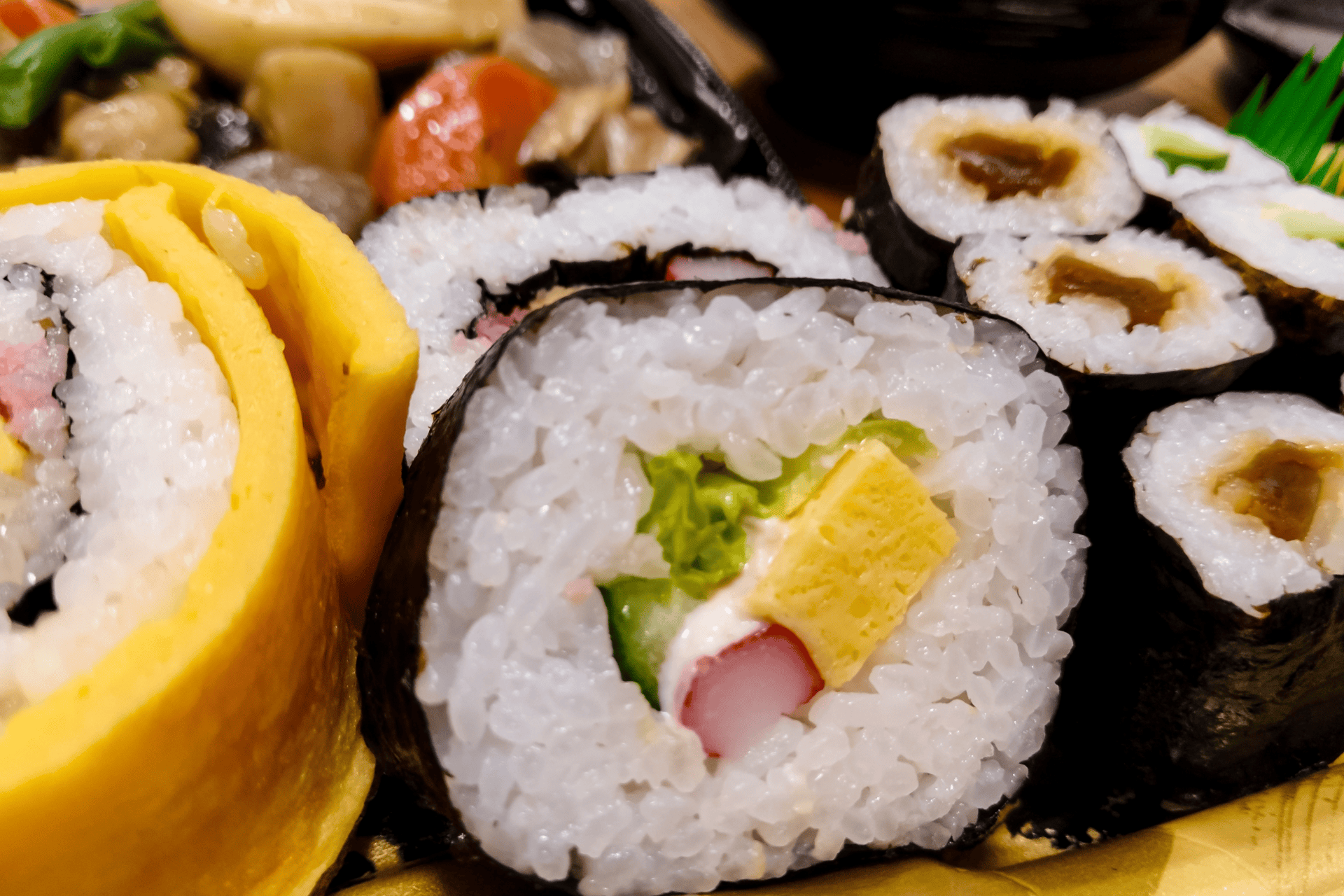
How Do I Choose the Right Fish for Makizushi?
When picking raw fish to make makizushi, you should always look for seafood that has the label either “sushi-grade” or “sashimi-grade.” This means it has been prepared safely for consuming it raw.

Is California Roll Considered as Makizushi?
Yes, California roll falls within a type of makizushi called uramaki (inside-out sushi rolls) with sushi rice on the outside instead of the nori sheet being on the outside. California roll is also a modern version of makizushi and an innovative twist as the outside rice is often sprinkled or covered with toasted sesame seeds and/or tobiko flying fish roe.
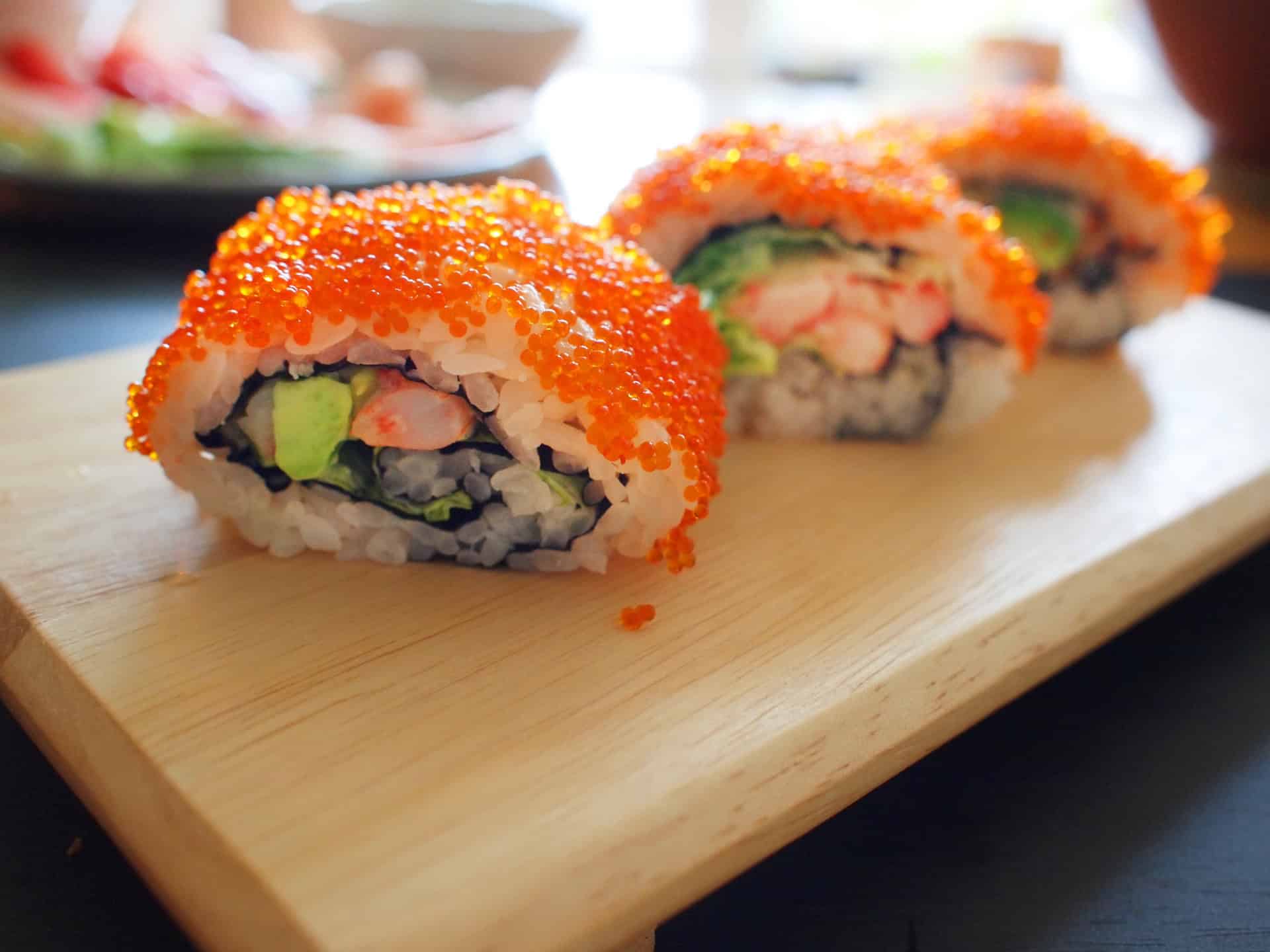
What Are Some Common Mistakes to Avoid When Making Makizushi at Home?
One common mistake people make is putting too much filling in the sushi roll. This can make it hard to roll and can also cause it to fall apart when eating. Another mistake is adding too much moisture from ingredients like cucumber or lettuce. Make sure to pat dry excess moisture using paper towel before adding them to your roll. Also, make sure to spread the fillings evenly.
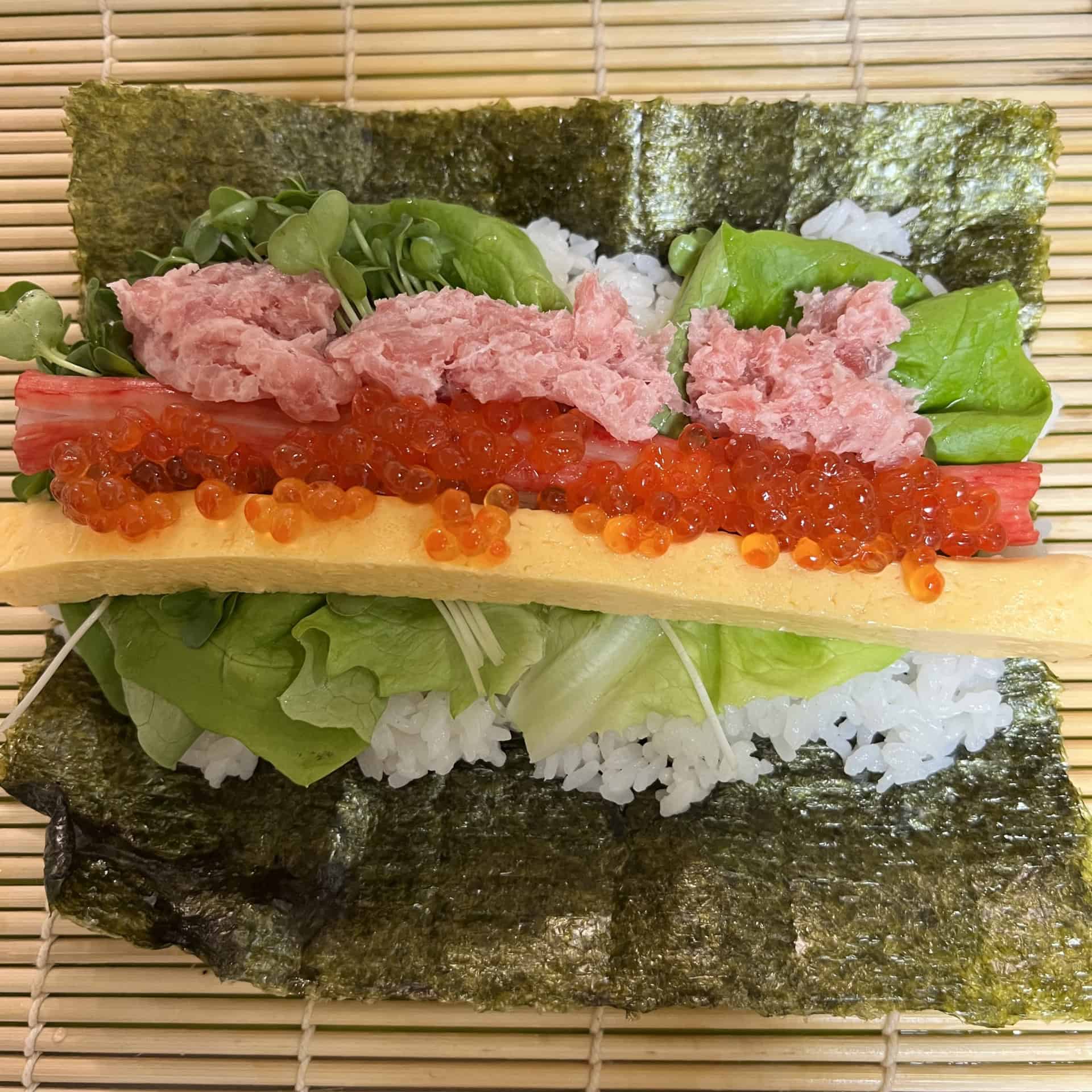
For those who are interested in Japanese culture, check out our culture category. Meanwhile if you’re looking for more food related posts, try exploring our food section. Or you can head to our Instagram account for posts of delicious restaurants, fantastic festivals, and travel experiences.
Disclaimer: All information is correct at the time of publishing and we will review regularly to ensure it stays updated. However we would recommend checking each manufacturer’s website for the latest product information.
Disclosure: We only recommend products and services we would use ourselves and all opinions expressed here are our own. When you make a purchase through Amazon links on our site, we may earn an affiliate commission, at no cost to you.


